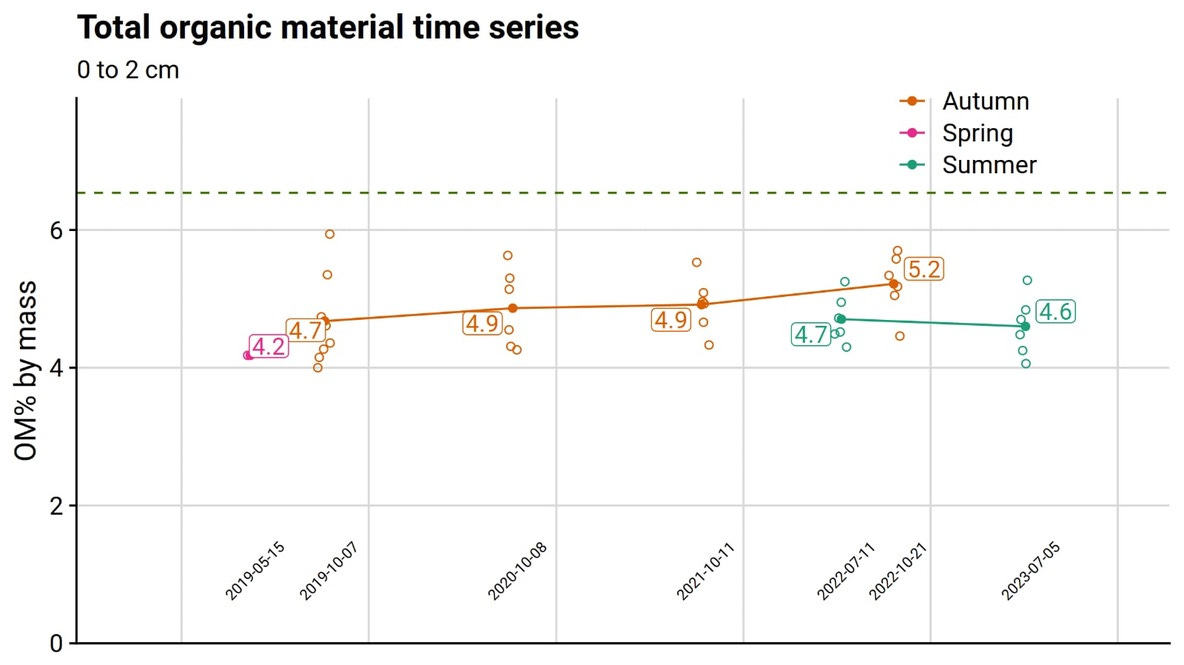If you read my last post (if you haven’t, you can find it here) you might be asking: “how did you decide this was the time to aerify?”
Below you see a chart of our OM246 sampling we perform annually with Dr. Micah Woods and the Asian Turfgrass Center. The orange data points represent the average OM2% across the six surfaces we test. These tests are done each October, at the end of the growing season, before winter topdressing is applied.
From 2021 to 2022, the OM2 went up by 3/10th of a percent. Whether this is a real increase, or random statistical variance, is hard to say. As Dr. Woods and I discussed a plan for 2023, we felt the increase was worth consideration. Also worth consideration was that Hazeltine will host the 2024 US Amateur Championship. The event takes place the third week of August and given our early August aerification timeframe, we knew we wouldn’t be aerifying in 2024.
Aside from the uptick in OM2 and the inability to aerify in August of 2024, we saw no real reason we had to perform some kind of process. Our daily performance metrics showed no decline. Greenspeed, surface firmness, moisture content and water infiltration are all at levels that meet or exceed our standards and ability to provide Championship-level conditions.
With these facts in hand, we had the following thoughts:
We know we can go two years without aerifying and still be producing excellent playing conditions. This was proven from August of 2021, to August of 2023.
We could probably continue into and through the 2024 season without aerifying and the surfaces would be just as good as they have been in 2023. Certainly uncharted territory for us, but with data backing up the likelihood of success.
If we get to summer of 2024 and realize we would like to have aerified, we won’t be able to do so.
Given those three thoughts, we decided the best plan for 2023 was performing the aerification plan I detailed in my previous post. It really was that simple.



I don’t work in the turf business but have found this series of posts fascinating.
I live in the Houston area and am very curious hiw this approach might be adapted for Bermuda putting surfaces that see play 12 months of the year and are dormant all winter??